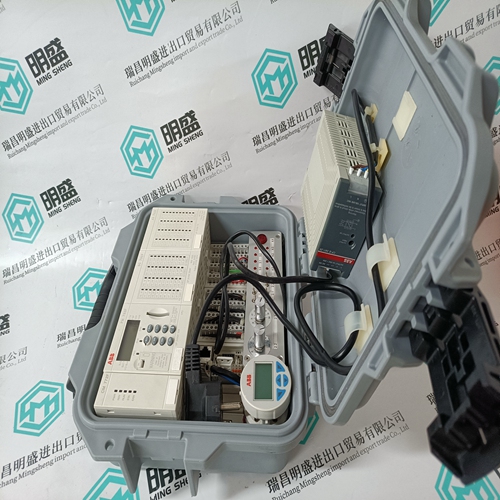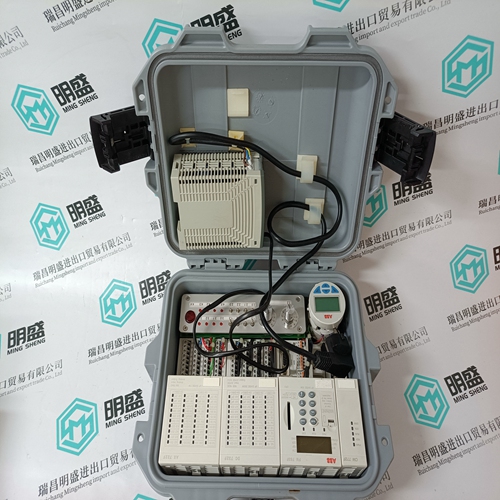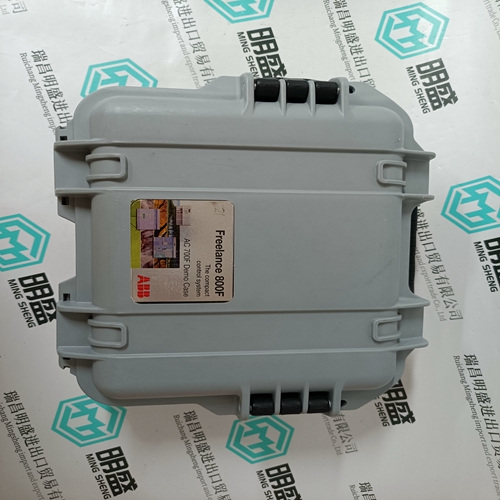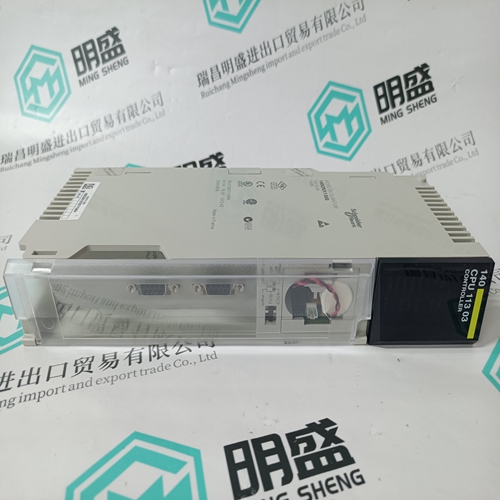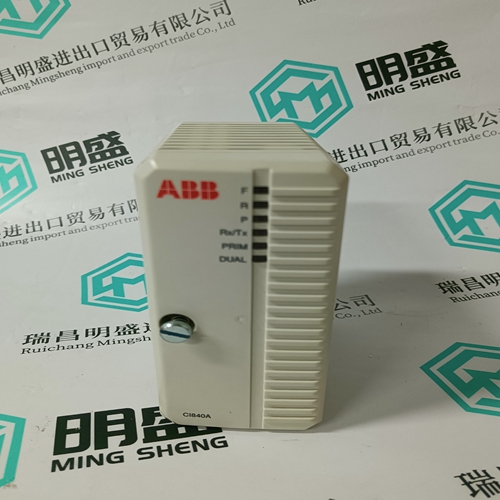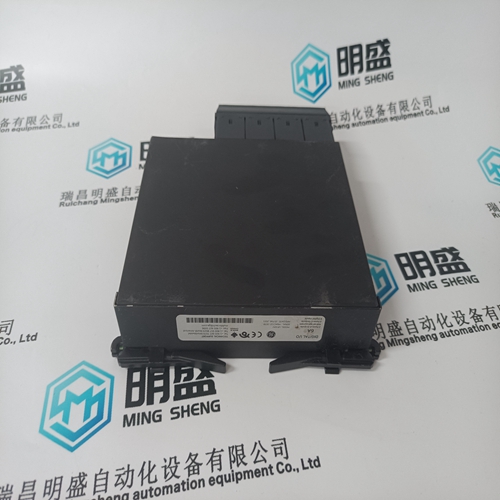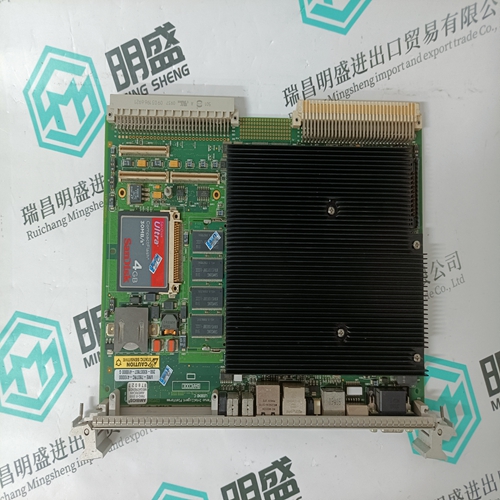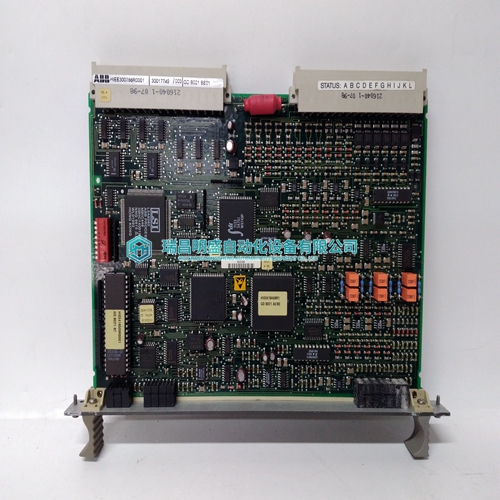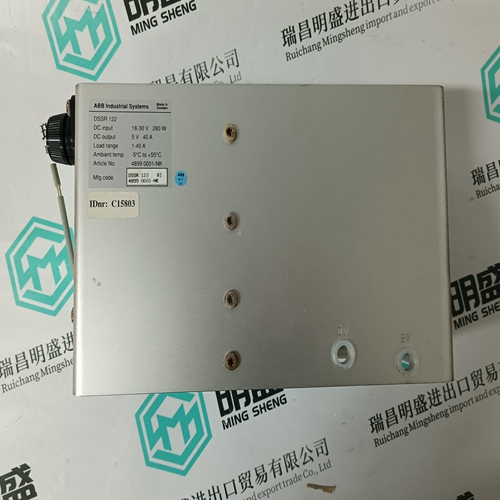Home > Product > DCS control system > CP-E 24/1.25 Switching power supply module
CP-E 24/1.25 Switching power supply module
- Product ID: CP-E 24/1.25
- Brand: ABB
- Place of origin: The Swiss
- Goods status: new/used
- Delivery date: stock
- The quality assurance period: 365 days
- Phone/WhatsApp/WeChat:+86 15270269218
- Email:stodcdcs@gmail.com
- Tags:CP-E 24/1.25Switching power supply module
- Get the latest price:Click to consult
The main products
Spare parts spare parts, the DCS control system of PLC system and the robot system spare parts,
Brand advantage: Allen Bradley, BentlyNevada, ABB, Emerson Ovation, Honeywell DCS, Rockwell ICS Triplex, FOXBORO, Schneider PLC, GE Fanuc, Motorola, HIMA, TRICONEX, Prosoft etc. Various kinds of imported industrial parts
Products are widely used in metallurgy, petroleum, glass, aluminum manufacturing, petrochemical industry, coal mine, papermaking, printing, textile printing and dyeing, machinery, electronics, automobile manufacturing, tobacco, plastics machinery, electric power, water conservancy, water treatment/environmental protection, municipal engineering, boiler heating, energy, power transmission and distribution and so on.
CP-E 24/1.25 Switching power supply module
Fault Generation The following sequence occurs when the protection circuits generate a fault. • One or more faults are detected by the control logic. • The fault source is latched – only for latched faults. • The output stage is disabled. • The LED indicates the appropriate fault code. • For non-latched faults. When the fault condition is cleared, the drive re-enables automatically. Latched faults are cleared by setting the Enable/ input to the disable state or by cycling (off/on) the Control Power. NOTE: The large bus capacitors store substantial energy. To use the control power to reset a fault, the power should be removed for at least 30 seconds to ensure that the fault resets. Self-resetting faults disable the drive and do not return it to normal operation until 50-100 ms after the fault condition clears. When multiple faults occur, the highest priority fault is reported. After the fault is cleared and the drive is reset by cycling the enable input, the next highest priority fault that still exists will be displayed.An appropriately-sized output capacitor in the main power supply is the key to economically delivering high peak power. In most applications, the capacitor supplies much of the peak power needed to accelerate the motor and inertia (under 20 ms). It also lowers the cost of the supply by reducing its silicon current. In addition, it also absorbs regenerated energy with a limited pump up of voltage and stabilizes the bus voltage for better dynamics. NOTE While the maximum peak-to-continuous power capability is 3:1, most applications have much higher ratios. The requirement that the main supply have a high peak-to-continuous power ratio is very important in selecting or designing the power supply
Single Power Supply Operation
A single power supply can be used to provide main or motor power and control power for the DC power input. The voltage range of a single supply is 20 V to 90 V. NOTE The drive can be damaged if the supply voltage exceeds 90 V, even briefly. The DC level plus transients plus regenerative pump up MUST NEVER exceed 90 V. Wire the single supply +terminal to J1-3 (+Bus) and to J1-1 (+CTRL) and the power supply –terminal to J1-2 (Bus/Ctrl Gnd). This power supply is typically unregulated, but a regulated supply can also be used. The power supply outputs must be isolated from the power line. See Regulatory Information for more details on isolation requirements. Wire both the power supply negative terminal and the drive chassis to earth for safety. The maximum continuous and peak (3 sec) main power and current at 75 V bus for the S200 DC drives is shown in the table below.The location of the main output capacitor is not critical. Up to 10 ft from the drive is an acceptable length, as long as the wire is sized so resistive drops at peak current are low. Voltage clipping of the inverter can cause the peak bus current to equal the motor current. A good rule is to size the bus wiring for 18 ARMS x rt(2) = 25.4 ARMS peak per drive. Use at least 16 AWG. The inductance of the bus and ground wiring is not critical because the internal drive bus capacitance can handle all the PWM current in most cases.
